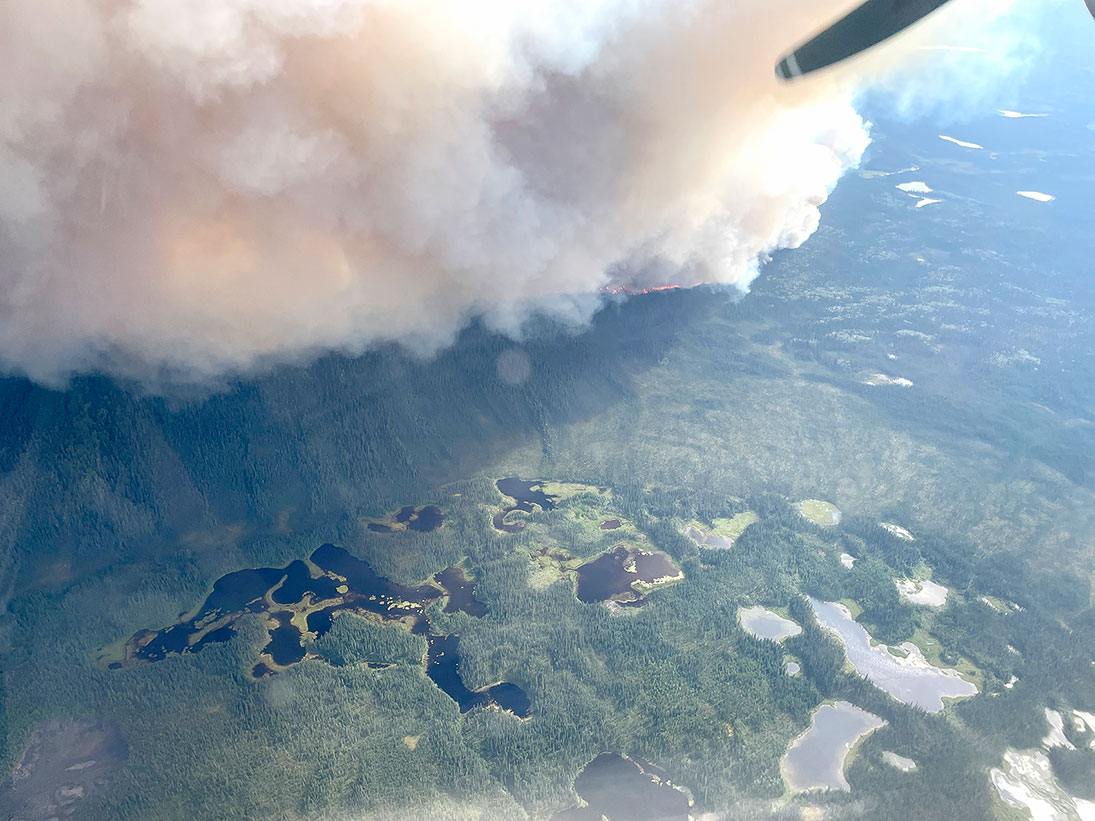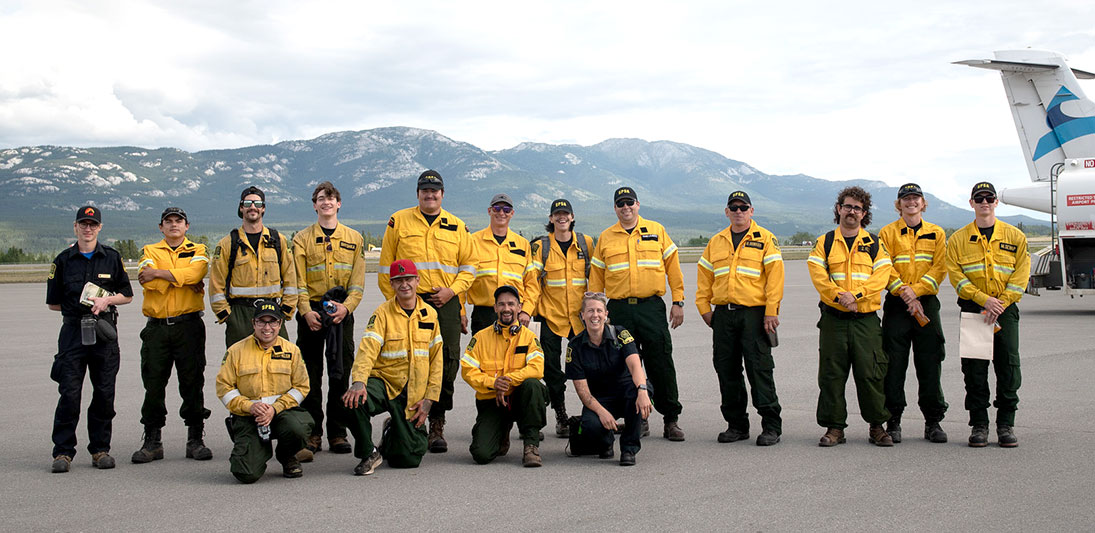
Photo by Photo Submitted
EMERGENCY SITUATION – Dense smoke from the Mayo-area fire is seen last Sunday. Photos courtesy GOVERNMENT OF YUKON

Photo by Photo Submitted
EMERGENCY SITUATION – Dense smoke from the Mayo-area fire is seen last Sunday. Photos courtesy GOVERNMENT OF YUKON

Photo by Photo Submitted
WELCOME REINFORCEMENTS – These firefighters are seen Monday arriving in Whitehorse from Saskatchewan. Photos courtesy GOVERNMENT OF YUKON
The Yukon government has now declared a state of emergency in response to a wildfire burning near Mayo and the First Nation of Na-Cho Nyäk Dun community.
The Yukon government has now declared a state of emergency in response to a wildfire burning near Mayo and the First Nation of Na-Cho Nyäk Dun community.
“This emergency declaration helps responders and law enforcement working with local partners to manage the situation, including making sure people stay out of harm’s way,” Community Services Minister Richard Mostyn said Tuesday in a news release announcing the declaration.
Elsewhere in the territory, the North Klondike Highway has closed intermittently and Victoria Gold Corp.’s Eagle mine northeast of Mayo remains evacuated due to active fires nearby.
The emergency declaration follows an evacuation order that went into effect for Mayo last Sunday due to the 4,477-hectare Talbot Creek fire, which is now burning four kilometres from the village.
The majority of Mayo’s estimated 450 residents have left the area, with many being put up in hotels in Whitehorse.
The Canada Games Centre is ready to assist anyone needing overnight accommodation.
The Kwanlin Dun First Nation is offering assistance, including counselling, to evacuees at its Potlatch House.
As well, the Whitehorse Food Bank is ready to provide special assistance where needed.
Some evacuees are staying in Carmacks and Pelly Crossing.
Firefighters from several provinces began arriving in Whitehorse this week to help. A group of 11 of them were sent to Mayo on Tuesday morning.
A new evacuation alert was put in place near Mayo on Tuesday at Kilometres 65 to 78 of the Silver Trail, also due to the Talbot Creek fire.
Evacuation orders are mandatory instructions to leave an area, while alerts are put in place to ensure people are aware of a fire and are prepared to flee if necessary.
These orders can be in place without a state of emergency, but the declaration gives responders more authority to do things like control access to roadways.
“This territorial declaration of a state of emergency will ensure that first responders have the ability and authority to continue to do this important work,” Mayo Mayor Trevor Ellis said in a statement Tuesday.
Though the Talbot fire is the reason for the evacuation, another fire 13 kilometres from the village at the Moose Creek headwaters is also causing some concern. That fire is now 1,112 hectares.
As a precaution, two Wildland Fire initial attack crews were assigned to begin installing of structure protection equipment such as sprinklers and hoses near this fire in the Minto Lake area.
The declaration encompasses a 15-kilometre radius from Mayo, so the Moose Creek fire is included in the emergency area.
Meanwhile, the East McQuesten fire that forced the Eagle mine evacuation continues active fire behaviour, according to Yukon Protective Services, with about 25 firefighters trying to secure its perimeter.
That fire is now 12,543 hectares, and has a full incident management team working on it.
The evacuation of workers at the gold mine was a voluntary decision by the company made in consultation with Yukon Wildland Fire Management.
Another large 10,979-hectare fire south of Dawson City has caused intermittent closures of the North Klondike Highway while fire crews conduct back-burns using a helicopter.
Smoky conditions on the highway have also caused some closures, so officials are asking anyone with travel plans to check Yukon 511 before heading out.
North of there, Old Crow is also experiencing extremely smoky conditions, making aerial assessments of area fires difficult.
Using satellite imagery, Wildland Fire has determined there is still no threat to the community from the fires.
There are currently 138 active wildfires in the territory, though most of these are in wilderness areas and fire crews simply allow them to burn naturally.
This has caused issues with outdoor recreationists, as a group of kayakers were rescued by Wildland Fire from the Peel River by helicopter on Tuesday.
No further information was available about the rescue efforts by this morning.
However, fire information officer Mike Fancie said they get a lot of calls from paddlers and from paddlers’ emergency contacts.
Anybody heading out on rivers in the territory needs to take into account both the impacts of fire and of smoke, Fancie added.
There are still evacuation alerts in place for the Keno City and Hecla mine area, the Sixtymile area off of the Top of the World Highway, the Dublin Gulch area and on the Silver Trail from Kilometres 10 to 35.
Up-to-date information is available at https://wildfires.service.yukon.ca.
In order to encourage thoughtful and responsible discussion, website comments will not be visible until a moderator approves them. Please add comments judiciously and refrain from maligning any individual or institution. Read about our user comment and privacy policies.
Your name and email address are required before your comment is posted. Otherwise, your comment will not be posted.
Be the first to comment